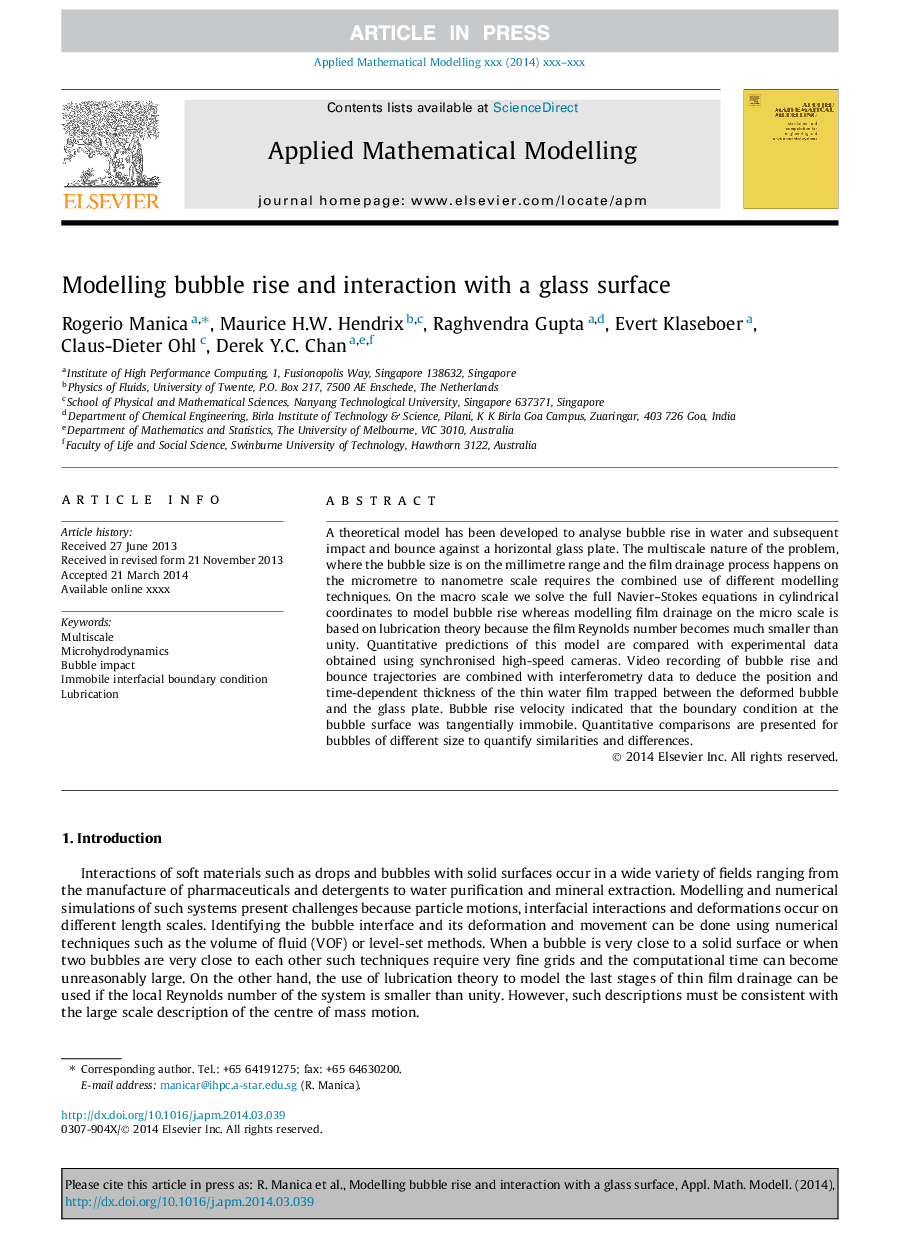| Article ID | Journal | Published Year | Pages | File Type |
|---|---|---|---|---|
| 8052696 | Applied Mathematical Modelling | 2014 | 13 Pages |
Abstract
A theoretical model has been developed to analyse bubble rise in water and subsequent impact and bounce against a horizontal glass plate. The multiscale nature of the problem, where the bubble size is on the millimetre range and the film drainage process happens on the micrometre to nanometre scale requires the combined use of different modelling techniques. On the macro scale we solve the full Navier-Stokes equations in cylindrical coordinates to model bubble rise whereas modelling film drainage on the micro scale is based on lubrication theory because the film Reynolds number becomes much smaller than unity. Quantitative predictions of this model are compared with experimental data obtained using synchronised high-speed cameras. Video recording of bubble rise and bounce trajectories are combined with interferometry data to deduce the position and time-dependent thickness of the thin water film trapped between the deformed bubble and the glass plate. Bubble rise velocity indicated that the boundary condition at the bubble surface was tangentially immobile. Quantitative comparisons are presented for bubbles of different size to quantify similarities and differences.
Related Topics
Physical Sciences and Engineering
Engineering
Computational Mechanics
Authors
Rogerio Manica, Maurice H.W. Hendrix, Raghvendra Gupta, Evert Klaseboer, Claus-Dieter Ohl, Derek Y.C. Chan,
